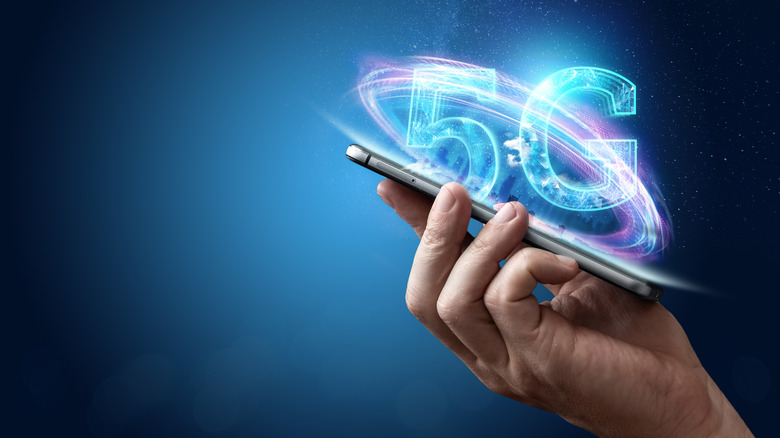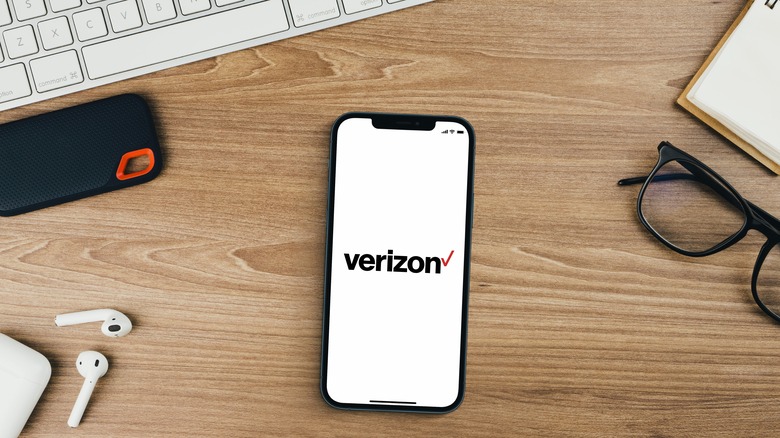What Does 5G UW Stand For And How Is It Different From Regular 5G?
Just as most of us were getting a handle on what 5G meant for our smartphone experience, new terms have come along that demand our attention. While most of us have figured out that 5G is much faster than previous generations of wireless technology, like 4G and LTE, mobile carriers have added some new variations to the mix that change things up a bit. If you've been paying attention to your phone's status bar, you might have noticed a UW, UC, or + next to the 5G icon. What you see on your phone will often depend on your wireless carrier.
That's because the big three wireless carriers in the U.S. — Verizon, T-Mobile, and AT&T — all have a different naming convention for their networks, which is enough to keep even the most tech-savvy person on their toes. Whether you're a Verizon Wireless customer or thinking about switching providers to take advantage of some of its discounts and perks, you'll want to become familiar with 5G UW, short for Ultra Wideband, since that's the version of 5G to describe its fastest mobile networks.
What's the difference between regular 5G and 5G UW?
Verizon coined the term 5G UW for what the company calls its highest-performing 5G network to differentiate it from its regular 5G service. With a 5G phone like the Moto G Stylus, Verizon customers can access the company's UW network. As mentioned above, UW stands for Ultra Wideband, and what that means is that 5G UW operates on the high band (mmWave) and mid-band (C-band) of the 5G spectrum. For context, 5G also has a low band, but that doesn't fall under the Ultra Wideband classification because its speeds are slower and it has broader coverage. In fact, Verizon's 5G Nationwide network, and that of its competitors, is built on the low-band spectrum. While low-band 5G has slower speeds, its broad coverage means it works in rural and suburban areas. Not long ago, you'd be hard-pressed to find UW coverage outside of urban areas.
However, that began to change when the FCC granted Verizon full access to the C-band licenses, which allowed the carrier to incorporate the mid-band spectrum into its 5G UW network. Today, Verizon's 5G UW uses high-band (mmWave) and mid-band (C-band) spectrum for its Ultra Wideband network and offers it with a number of its wireless plans, including the Unlimited 5G Plans the company has streamlined to make them easier to understand. If you see UW pop up next to the 5G in your phone's status bar, you're connected to either the mmWave or C-band network. Verizon's mmWave coverage is limited to big cities and stadiums because its high frequencies have a shorter range and require more closely spaced infrastructure.

